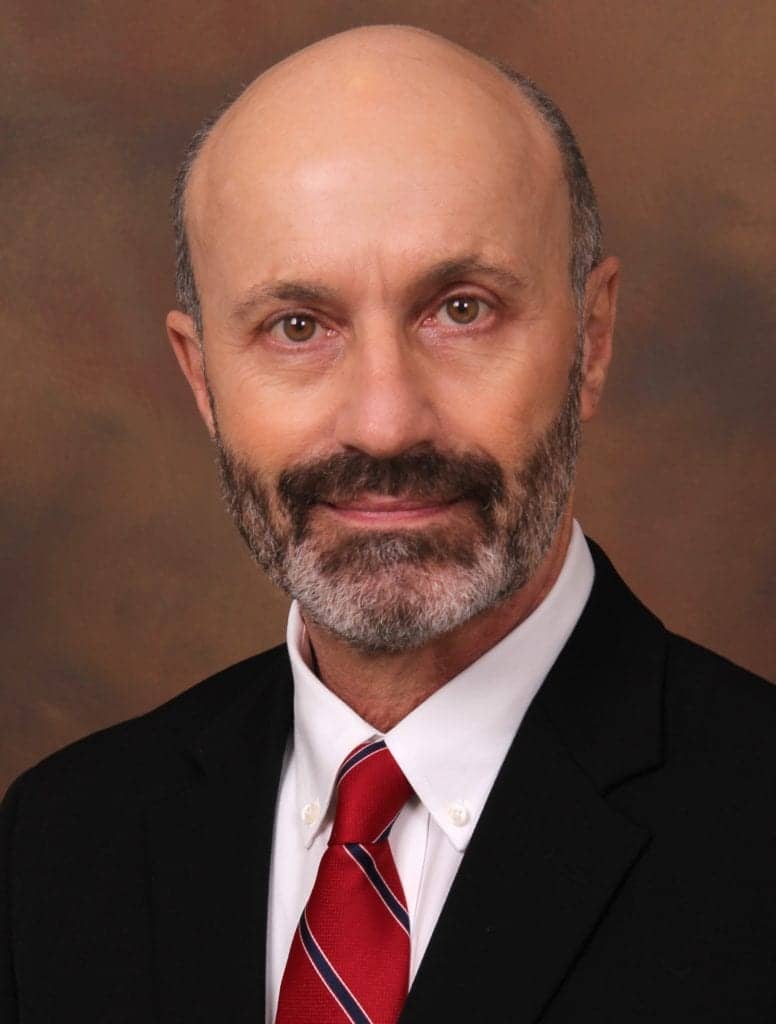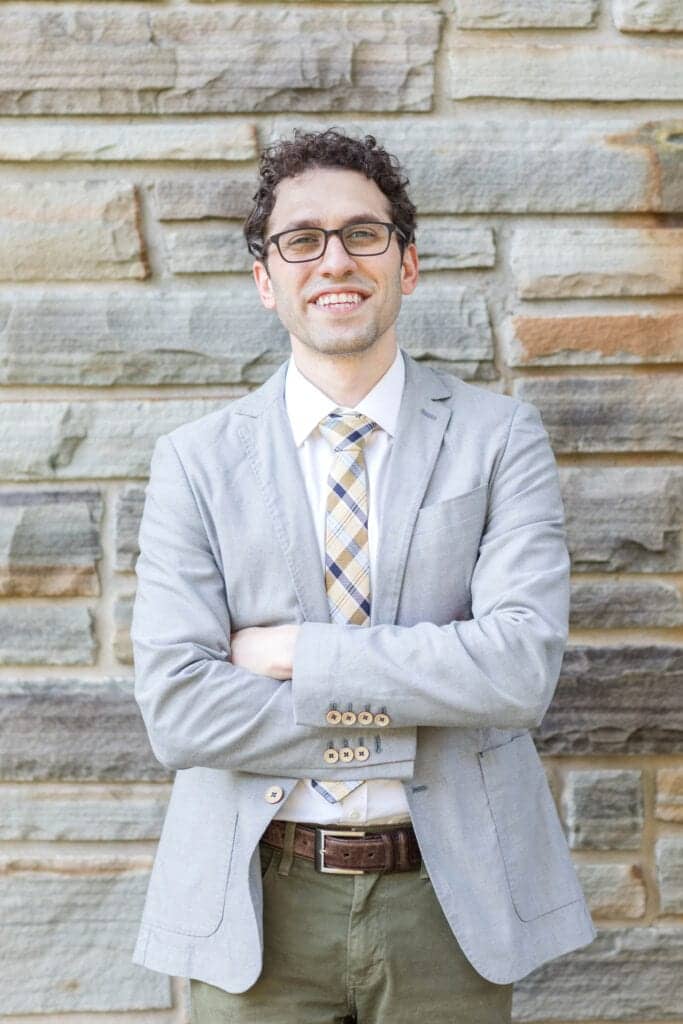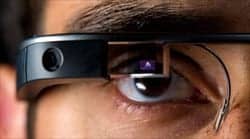Inside the Research | November 2020 Hearing Review
By Douglas L. Beck, AuD
If you’ve been following the exciting research at Johns Hopkins about cognition and hearing loss, as well as their scientific reports on personal sound amplification products (PSAPs) and over-the-counter (OTC) hearing devices, you’ll often see in the bylines the name of audiologist Nicholas (Nick) Reed, AuD. Dr Reed is now an assistant Professor in the Department of Epidemiology at Johns Hopkins University Bloomberg School of Public Health and started his career in the lab of noted hearing researcher Frank Lin, MD, PhD. More recently, Reed has been working on the Aging and Cognitive Health Evaluation in Elders (ACHIEVE) study with Dr Lin and numerous other distinguished researchers, so we thought it would be a good idea to get his perspectives on some of these topics.
Beck: Good Morning Nick! Nice to speak with you again.
Reed: Hi Doug. Thanks for the invitation.
Beck: My pleasure. I’d like to start by talking a little about your history and the very important work you’re doing and publishing with regard to cognition, dementia, and amplification. As such, you’ve recently moved to the Department of Epidemiology?
Reed: Right! I moved into the department in December of 2019, so I’ve been here just under a year, and I’m currently an assistant professor in the Department of Epidemiology at Johns Hopkins University Bloomberg School of Public Health. In fact, I had a rather quick start in research: I graduated with my AuD on a Friday in 2015, and on the following Monday, I started working in Frank Lin’s laboratory in the ENT Department at Johns Hopkins School of Medicine. Of course, the ENT department seems like a more natural place for an audiologist to work, but honestly, I am so profoundly interested in public health issues and my skillset evolved over time such that epidemiology became a perfect fit.
Beck: I totally understand. And you’ve been studying, publishing, and lecturing on amplification and how it impacts multiple aspects of cognition, and you’ve explored the impact of diabetes on hearing loss, too?
Reed: Yes. As a matter of fact, that’s how I met Frank Lin. We both had posters on display at a professional meeting right next to each other. My first poster was on Cognition and Diabetes and Hearing Loss, and the intersection of the three—under the guidance of Dawn Konrad-Martin from National Center for Rehabilitative Auditory Research. Frank had the poster next to mine, and we started talking about whether PSAPs might be used as a viable treatment for hearing loss.
We ended up designing a rigorous study1 with 6 devices: 4 PSAPs that performed well on electroacoustic testing, one PSAP that performed poorly, and one popular mid-level hearing aid. We ran our subjects through clinical tests including random ordered speech-in-noise tests, and random-ordered devices. We compared the percent change from unaided speech in noise across the devices. We found there wasn’t much difference between the two best PSAPs and the hearing aid on the speech-in-noise measure, while one PSAP actually contributed to poorer speech-in-noise measures than unaided. And to be clear, that’s not to say the devices are the same or equivalent in all aspects; it simply means that in this efficacy design, they were similar on a speech-in-noise in-laboratory assessment.
Beck: And so the bottom line was that some PSAPs are actually capable of performing similar to some hearing aids in very specific situations?
Reed: Yes, that’s right. And so two points: 1) I think it is always important to consider the experimental design. This is an efficacy design where we have isolated the devices to a laboratory setting and we have adult participants with mild-to-moderate hearing loss. It is not generalizable across the entire population, and 2) I think it is important to separate the device from the process. The study does not conclude that, in every facet of a person’s life, self-fit PSAPs are the same as traditional professional-fit hearing aids. However, results suggest that on a clinical speech-in-noise measure, the results were similar, and so that begs for more analysis and more exploration, and perhaps new opportunities for professionals, patients, and manufacturers.
Beck: Okay. Please tell me your thoughts on self-fitting hearing aids?
Reed: That’s a really interesting topic. Self-fitting hearing aids are developing rapidly. Research from across the globe—for example, Elizabeth Convery’s work2,3 or Larry Hume’s trial4,5—suggests that adults with mild-to-moderate hearing losses can self-fit. I think we’ve only just scratched the surface in this area. Much of the research to date on high-performing self-fitting devices have had ample input from audiologists to essentially codify the best practices of the clinic into a device. However, as the market evolves, it is unclear that self-fitting will continue to mimic these best practices. The evolution of self-fitting could go in many directions and it will be interesting to see how patients respond. I, personally, believe there will always be a role for the audiologist to add a human touch to fittings, programming, counseling, and to offer guidance for patients who don’t succeed with self-fitting.
Beck: Okay, let’s move on to your thoughts about OTC and how it may impact professionally prescribed and fitted hearing aids?
Reed: Well, within the umbrella of OTC, I think it is important to separate products and services. The Over-the-Counter Hearing Aid Act of 20176 creates a new class of direct-to-consumer, self-adjusted, Food and Drug Administration (FDA) approved hearing aids for consumers. Whether this means those products will be completely devoid of the current delivery model is unknown. There may be many individuals who purchase an OTC product and self-fit using the product’s software and never see a hearing care professional. Of course, there could be models where the end-user may wind up with professional services delivered through an OTC product’s platform or bring the device to a local professional.
I suspect a probable scenario is that sometime in the future, patients will acquire their own OTC product(s), and then seek professional services to try to maximize benefit. However, without insurance coverage for hearing care support services, this will be a surprising and unanticipated out-of-pocket expense for the patient.
There are lots of interesting options, and we’ll have to see how it evolves. I suspect a probable scenario is that sometime in the future, patients will acquire their own OTC product(s), and then seek professional services to try to maximize benefit. However, without insurance coverage for hearing care support services, this will be a surprising and unanticipated out-of-pocket expense for the patient.
There are currently several bills in various stages in Congress that might address this. An issue with those bills is that hearing care services are often not included or described and may be seen as “included” within the previous hearing aid delivery protocol. That is to say, insurers (Medicare, Medicaid, managed care, etc) see all services as packaged into the hearing aid sale…and that was more-or-less true in the bundled model. But this won’t be the case with a robust OTC hearing aid market.
Perhaps we have to re-define audiology into a service-based profession—along the lines of optometry, neurology, dentistry, or chiropractic—where the future and value of the profession is not based on selling a product, but rather is based on professional knowledge and services.
Beck: And of course, that means the HCP will have to charge for their time and services…which is pretty much a departure from the bundled model we’ve all been using for the last 100 years. In the pre-OTC world, professionally dispensed hearing aid prices generally included the hearing aids, re-tests, aural rehabilitation, batteries, loss, theft and damage and warranty, hearing aid checks, counseling, cleaning, wax guard/filter changes, and more…but in the OTC world, I suspect there will be lots of itemized charges, as well as hourly fees, shipping charges, cleaning fees, and more. Unfortunately, there is also a chance that the purchased OTC product may not be the best product for the individual, and that’s another whole world of problems for the patient/end-user.
However, when you think about itemizing your professional services and fees, that’s not a new idea. The National Academy of Sciences, Engineering and Medicine (NASEM)7 stated in 2016, within their Goal #9, that HCPs “should improve transparency in their fee structure by clearly itemizing the prices of technologies and related professional services to enable consumers to make more informed decisions.”
Reed: There will be disruption to the status quo. That is for certain. Some patients will appreciate the transparency in all the fees and select their services a la carte while others will still prefer a bundled model. There is evidence for this in medical care when looking at fee for service models and bundled care models or concierge medicine, which is an extreme example of a sort of bundled model. I’m glad you mentioned NASEM because that report was an excellent state-of-the-art scoping report and it offered a dozen recommendations to make it all work together.
Beck: Agreed. A large part of the potential problem as we transition into the OTC world is that only a few of the NASEM recommendations have been implemented. Another section within the same NASEM Goal #9 stated that CMS should evaluate options, including possible statutory or regulatory changes to provide coverage for assessment, services, and technologies, including hearing aids so that treating hearing loss would be affordable for Medicare beneficiaries.
Reed: I think that’s true—there is a lot of work to be done. NASEM was thorough and most people don’t realize they went above and beyond hearing aids; they included educational recommendations, open platforms, consumer outreach programs, and much more. Several of the changes are actively being worked on. In fact, in the H.R. 3 bill,8 the Cochlear Center for Hearing and Public Health has made it clear that we need audiologic services to be covered to complement and maximize the potential of a robust OTC hearing aid market. The Center also suggested hearing aid coverage based on degree of hearing loss, so people with severe and profound losses might possibly get hearing aids and audiology services covered via Medicare. It is important to remember that OTC products will be technologically inappropriate for those with severe or greater losses. But to date, none of this has happened.
I think HCPs need to continue to make a concentrated push forward regarding coverage for professional services to complement OTC, or we’ll likely see a few unintended consequences as OTC products may unfold faster than the much-needed delivery care models and payers can adapt.
Beck: Very interesting, Nick. I appreciate your viewpoint and the discussion, thanks for sharing all of that.
Let’s spend a few minutes on the ACHIEVE study, of which you are a co-researcher. I should point out that ACHIEVE is an acronym for Aging and Cognitive Health Evaluation in Elders. And your new publication is in the September/October 2020 edition of Ear and Hearing, authored by Sanchez, Arnold, Reed, Oree, Matthews, Eddins, Lin, and Chisolm.9
Reed: Thanks Doug. The ACHIEVE study is a multi-year, multi-site, random controlled clinical trial assessing the effect of best practice hearing care on cognitive decline. The ACHIEVE study is an efficacy study with multiple reports, one of which is the focus on optimal, best-practice hearing care using a model designed by Michelle Arnold, Theresa Chisolm, and Victoria Sanchez from University of South Florida. In the articles released to date (feasibility and pilot trials), we reveal that using best practices facilitated excellent clinical results. That is, the expected outcomes were achieved regarding significant improvements in speech in noise and significant decreases in self-perceived hearing handicap.
Moreover, compliance was excellent as 20 of the 21 participants in the experimental group completed all intervention sessions, and 19 came back for their 6-month post-intervention visit. On average, they wore their hearing aids about 8 hours daily…and so the bottom line is that the proposed intervention protocol is very good at achieving the desired goals, and this serves as a foundation for the ongoing work.
Beck: Fantastic! But I have to ask, any insights on results across other domains—like cognitive?
Reed: Really, really, good question—I mean, that’s the point of all of this, right? These feasibility and pilot trials were short and not powered to capture those types of findings. Nonetheless, in the pilot study, we did see some interesting trends such that those in the non-hearing care arm (health aging) of the study experienced social network shrinkage that was not seen in the hearing care arm of the study. There was also an efficacy signal detected on the memory scores, suggesting a positive effect of hearing intervention. These results are exciting and encouraging; however, we won’t know the full results of the ACHIEVE trial for another 3 to 4 years.
Beck: Okay Nick, thanks so much for sharing your thought and experiences. These are fascinating issues and promising results, and we’re all looking forward to the final reports.
Reed: My pleasure, Doug. Thanks for the kind invitation!
References
- Reed NS, Betz J, Kendig N, Korczak M, Lin FR. Personal sound amplification products vs a conventional hearing aid for speech understanding in noise. JAMA. 2017 [Jul 4];318(1):89-90. PMID:28672306
- Keidser G, Convery E. Outcomes with a self-fitting hearing aid. Trends in Hearing. 2018:22.
- Convery E. Meeting the challenges of OTC: Who are self-fitting hearing aids really for? Hearing Review. 2020:27(6):14-15.
- Humes LE, Rogers SE, Quigley TM, Main AK, Kinney DL, Herring C. The effects of service-delivery model and purchase price on hearing–aid outcomes in older adults: A randomized double-blind placebo-controlled clinical trial. Am J Audiol. 2017;26:53-79.
- Humes LE, Rogers SE, Quigley TM, Main AK, Kinney DL, Herring C. The effectiveness of two service-delivery models in older adults: A randomized double-blind placebo-controlled clinical trial. Hearing Review. 2017;24(5);12-19.
- US Congress. H.R.2430—FDA Reauthorization Act of 2017. August 18, 2017. Available at: https://www.congress.gov/bill/115th-congress/house-bill/2430
- National Academies of Science, Engineering, and Medicine (NASEM). Hearing Health Care for Adults: Priorities for Improving Access and Affordability. Washington, DC: The National Academies Press;2016. Available at: https://doi.org/10.17226/23446
- US Congress. H.R.3—Elijah E. Cummings Lower Drug Costs Now Act, Title VI. Providing for dental, vision, and hearing coverage under the Medicare program. Available at: https://www.congress.gov/bill/116th-congress/house-bill/3
- Sanchez VA, Arnold ML, Reed NS, Oree PH, Matthews CR, Clock Eddins A, Lin FR, Chisolm TH. The Hearing Intervention for the Aging and Cognitive Health Evaluation in Elders randomized control trial: Manualization and feasibility study. Ear Hear. 2020 [Sep/Oct];41(5):1333-1348. doi: 10.1097/AUD.0000000000000858. PMID: 32251012.

About the author: Douglas L. Beck, AuD, is the Vice President of Academic Sciences at Oticon Inc, Somerset, NJ. He has served as Editor in Chief at Audiology Online and as Web Content Editor for the American Academy of Audiology (AAA). Dr Beck is an Adjunct Clinical Professor of Communication Disorders and Sciences at the State University of New York, Buffalo, and also serves as Senior Editor of Clinical Research for The Hearing Review’s Inside the Research column.
Citation for this article: Beck DL. PSAPs, OTC and Self-fitting hearing aids, ACHIEVE, and more: An interview with Nicholas Reed, PhD. Hearing Review. 2020[Nov];27(11):26-28.
CORRESPONDENCE can be addressed to Dr Beck at: [email protected]






